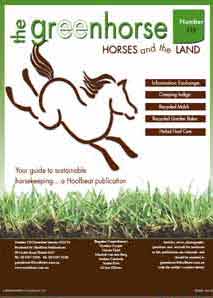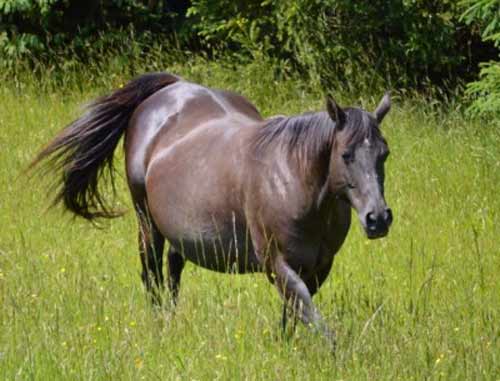The Green Horse section provides practical information on managing environmentally sustainable horse properties, readers stories and tips, as well as advice and articles from equestrian experts in their fields.
June July 2016
Vol 38 No 1
In this issue of The Green Horse you will find the following articles:
Information Exchange
- Greasy heel and re-cycling horse manure
Common Horse Pasture Pitfalls -
by Kentucky Equine Research.
Help Nature Prevent Flooding
by Wendy Elks
What’s in a Name, Recycling Ideas
Making Your Own Poultice
by Horse Herbalist Angela Davison
Processionary Caterpillars
Causing spontaneous abortion in mares.
Arena Dust by Sarah Jackson
The likelihood of respiratory irritation in horses and people who spend time in equestrian environments, from inorganic dust, is not well understood.
WIN A YEAR'S SUBSCRIPTION...
share your equine related recycling ideas and each issue one reader will win.
Send ideas to Rebecca -
The Green Horse Support <thegreenhorse.assistant@gmail.com>

|
  
  

CATERPILLAS AND THEIR ROLE IN SPONTANEOUS ABORTION IN MARES

Found all around Australia, particularly around acacia and eucalypt species, the Processionary Caterpillars leave their nests built in trees around April. Moving in long head-to-tail chains, the grubs (that will eventually become the Bag-shelter moth) move out to pupate in the surrounding soil. The abandoned nests then disintegrate and the contents are distributed around the surrounding environment. As they move through a pasture the caterpillars also shed some of their hairs, which are what cause the problem, according to relevant studies so far.
Each individual caterpillar has thousands of miscoscopic barbed hairs that, once ingested, causes spontaneous abortion in mares.
Foals can be stillborn at various stages of development or born with defects that render them unsuitable as working horses. The mortality rate across the industry can be as high as 10% in a year and the issue is said to cost the industry millions of dollars.
University of QLD researcher Julianne Farrell said “When the pregnant mare eats the shed skins that have dropped on the pasture, the hairs work their way through the gut and pick up various bacterial infections…they pass through tissue and into the uterus where they set up infections, and into the developing foal.”
Currently there is no chemical means to control the pest. At present, horse studs really only have the option of manually removing and destroy the nests and trying to separate the pregnant mares from any areas where the caterpillars are, or might occur, as best as possible.
The Australian Research Council has given the University of Qld a research grant, funded by the Thoroughbred industry to help prevent the devastating impact that Processionary Caterpillars have on the equine industry.
The aim of the research is to better understand the threat posed by the caterpillars and ultimately, develop some solutions. The project will focus on the ecology of the caterpillars in order to identify any weak points of their life cycle that can be targeted for control measures and determine why numbers are more prevalent some years and not others.
Researchers will also use the services of a retired police dog to help find the pupae in the soil to help find ways to reduce the number of adult moths that emerge at the end of the year that would otherwise begin the life cycle over again.
|